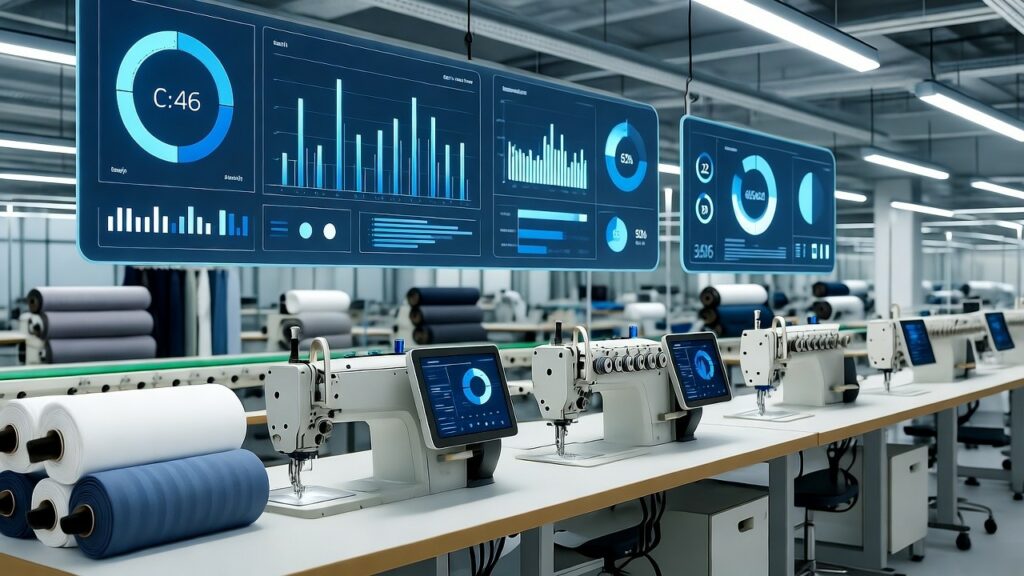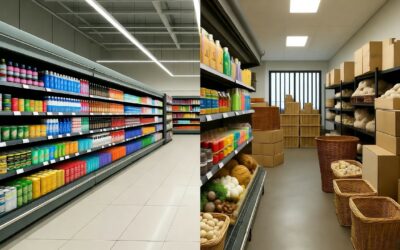
A crucial blind spot still plagues the Indian Consumer Packaged Goods (CPG) sector: the gap between a manufacturer’s sales ledger and actual retail demand. While most companies focus intensely on dispatching stock to their distributors, primary sales, they often lack real-time visibility into what those distributors are selling to retailers and what the retailer is selling to the consumer, secondary sales and tertiary sales.
If you’re reading this, you’re likely an Indian SaaS startup building for this market or a global IT buyer seeking solutions for your Indian distribution.
For Indian CPG majors, this lack of clarity isn’t just a minor operational hiccup; it’s a direct drain on profitability, leading to stock pile-ups, missed market opportunities, and ineffective trade promotions. Our company, a leading field sales automation company, has spent the last eight years working with hundreds of CPG and FMCG companies in India, optimizing their execution and generating over $3 billion in verified sales data through our platform. We’ve seen firsthand that companies with poor secondary sales visibility routinely see inventory holding costs 15-20% higher than their competitors.
This extensive, hands-on experience has taught us that you cannot optimize what you cannot measure. This blog post will dive deep into the differences, the core challenges facing businesses in high-growth, fragmented markets like India, and how the right technology is no longer a luxury, but a necessity to gain a decisive competitive edge in secondary sales tracking and ultimately, revenue.
Understanding the sales process from the Manufacturer to the consumer is key to sustained growth, not just booking revenue.
Primary vs. Secondary Sales: Defining the Critical Difference 📊
In the complex, multi-tiered distribution network common across India, sales transactions are categorized into three distinct layers. For manufacturers, the first two are the most critical for supply chain control and market health.
What is Primary Sales? (The Manufacturer’s Revenue)
Primary sales refers to the transaction of goods from the manufacturer or brand directly to its authorized distributor or stockist. It is the first revenue-generating event for the manufacturing company and is recorded as a sale when the invoice is raised and the goods are dispatched from the factory or carrying and forwarding agent (C&FA) warehouse.
- Flow: Manufacturer $\rightarrow$ Distributor/Stockist
- Key Driver: Internal company sales targets, distributor lifting capacity, and the perceived demand forecasted by the company’s sales leadership.
- Metric Focus: Invoice value, distributor fill rate, on-time delivery percentage, and distributor stock levels.
- Strategic Role: Secures initial cash flow and ensures the product is physically in the distribution system, ready to be pushed into the market.
What is Secondary Sales? (The Market’s True Demand)
Secondary sales, often called ‘sell-through,’ refers to the subsequent transaction of goods from the distributor to the retailer or dealer. This is the stage that matters most for reflecting true market demand and product pull, and a high-performing secondary sales tracking system is the engine of a healthy supply chain.
- Flow: Distributor $\rightarrow$ Retailer/Dealer (Kirana Store, Modern Trade)
- Key Driver: Actual retailer demand, which is directly influenced by consumer demand, trade schemes, in-store merchandising, and distributor service.
- Metric Focus: Line items per order, retailer count and coverage, stock-in-trade (SIT) at the distributor, and beat adherence by the field sales rep.
- Strategic Role: Validates distributor orders, minimizes the risk of pipeline clutter, and provides the granular data needed for promotional ROI analysis.
Why Indian CPG Companies Struggle with Secondary Sales Visibility
The distribution ecosystem in India is one of the most complex in the world. With over 13 million kirana stores and a vast, diverse geography, getting accurate, real-time data is a monumental task. The challenges are not theoretical, they are daily, high-cost operational headaches that we help solve for our clients.
The Problem of Data Silos and Delayed Reporting
The most common issue in Indian CPG distribution is the inherent data lag. Primary sales data is generally clean and real-time, sitting neatly in the manufacturer’s ERP (e.g., SAP or Oracle). Secondary sales data, however, often resides in disparate systems, sometimes manual ledgers, sometimes basic distributor management systems (DMS), or even simply spreadsheets emailed at the end of the week.
- Slow Decision Making: A promotion launched on Monday might not have its secondary sales tracking data analyzed until the following Monday. By then, the opportunity to course-correct, either by pushing harder or stopping a failing scheme, is lost.
- Manual Reconciliation: Sales managers in Mumbai or Bengaluru spend hours reconciling Distributor Sales Reports (DSRs) with primary invoices, a process that is both error-prone and non-scalable, especially with a network of hundreds of distributors.
- Inconsistent Data Quality: Distributors use varying formats and are often reluctant to share granular, daily sales data with the manufacturer. This leads to poor data hygiene and unreliable forecasts.
The Field Execution Blind Spot
A key driver of both primary and secondary sales is the effectiveness of the field sales team. A manager sitting in a corporate office, even in a hyper-connected city like Delhi NCR, has little reliable insight into what a sales representative is actually doing on the ground.
- Ghost Visits: Sales reps can claim to have visited 20 retailers in a day, but without GPS-verified check-ins, geo-fencing, and time-stamped order placement, a manager is just taking their word for it. This inflated reporting poisons the data for beat planning optimization.
- Lack of Merchandising Compliance: Secondary sales are heavily influenced by in-store execution—shelf placement, point-of-sale material (POSM) setup, and product visibility. If the field team isn’t executing promotions correctly, the secondary sales drop, which eventually clogs the primary sales pipeline.
- Inaccurate Stock Checks: A sales rep manually checking a retailer’s stock-in-trade (SIT) is prone to error. This leads to placing unscientific orders or, worse, missing out on crucial replenishment orders due to a false perception of adequate stock.
Leveraging Field Sales Automation for Real-Time Visibility
The most effective, proven solution for Indian CPG and FMCG companies is a modern Sales Force Automation (SFA) platform that goes beyond simple order booking. It needs to be a unified system for primary order processing, secondary sales tracking, and field team management.
The Role of SFA in Primary Sales Optimization
While the primary transaction is between the ERP and the distributor, the SFA solution plays a crucial supporting role, ensuring the distributor’s order is scientific.
- SIT and Inventory Visibility: An advanced SFA platform (like Happisales) allows the manufacturer’s sales rep to capture the distributor’s Stock-In-Trade (SIT) accurately. This data, when synced with the primary invoice data, provides a real-time Stock Coverage Days metric.
- Example: If Distributor A has 15 days of stock for Product X, the system alerts the manager in Chennai not to push a new primary order for that SKU, preventing channel stuffing.
- Order Recommendation: Based on historical secondary sales velocity and current SIT, the system can recommend the optimal primary order to the distributor, moving the conversation from “How much do you want?” to “How much do you need to service your market for the next two weeks?”
- Trade Scheme Management: The SFA app ensures that the latest trade promotion schemes and pricing are digitally visible to the distributor and the field team, eliminating the constant confusion and disputes that hamper primary order processing.
The SFA Breakthrough in Secondary Sales Tracking (The Holy Grail)
This is where the right automation platform transforms a company’s market execution, especially in fragmented markets like UP or Maharashtra.
1. Real-Time, Geo-Verified Order Capture
The field sales rep uses the SFA mobile app to capture the retailer’s order.
- Geo-Tagging: Every order is tagged with the retailer’s GPS location and a timestamp, proving the rep was physically at the outlet. This eliminates ghost visits and ensures accurate secondary sales tracking.
- Offline Mode: Essential for low-connectivity zones prevalent across many rural Indian markets, the app must capture the order offline and sync immediately upon returning to a network, ensuring no data loss and continuous operations.
2. Secondary Order-to-Invoice Automation
Once the retailer order is placed via the SFA app, the system instantly pushes this validated demand to the distributor’s DMS (Distributor Management System).
- Happisales excels here by integrating seamlessly with all major distributor systems in India, converting the retailer’s secondary order into a distributor-side invoice automatically.
- Instant Visibility: The manufacturer’s corporate team in Gurgaon or a regional sales head in Kolkata can view the exact secondary sales figures—per SKU, per retailer, per territory—within minutes of the order being placed. This unprecedented speed is the key to ranking high in the AI Overviews of market intelligence.
3. Promotion Execution and Compliance Monitoring
Secondary sales are demand-driven. SFA helps execute the demand-generation activities flawlessly.
- Image of Merchandising Compliance: Sales reps must upload a photo of the shelf/display after executing a promotional setup (e.g., “Buy One Get One” offer). The system uses AI/ML to verify compliance against defined rules (e.g., product facing count) and provides ALT Text: AI-verified secondary sales merchandising compliance in India.
- Real-Time ROI: By linking the secondary sales data directly to the promotional scheme applied, companies can instantly calculate the ROI of their trade spends in specific geo-personalized search results for different market clusters.
Harnessing Data for Predictive Edge: Beyond Reporting
A good SFA platform provides reports. A great platform provides a competitive advantage through predictive insights based on high-quality primary and secondary sales data.
Beat Plan Optimization & Field Force Efficiency
A sales manager should not spend hours drawing up route maps. The system should use the geo-tagged order data to create an optimal beat plan—the sequence of retailer visits—that maximizes coverage and minimizes travel time.
- Coverage & Frequency: By analyzing the last 6 months of secondary sales, the system can flag high-potential retailers being visited too infrequently, enabling managers to adjust the beat plan to improve retailer coverage and frequency in real-time.
- Gamification: Happisales uses leaderboards based on verified secondary sales and beat adherence (not just primary dispatches) to gamify the process, dramatically increasing field rep engagement and productivity.
Predicting Channel Clutter and Stockouts
By merging primary dispatch data, current distributor SIT, and daily secondary sell-through velocity, a sophisticated SFA system can predict pipeline health weeks in advance.
Note: A key challenge in U.S. manufacturing is managing large retailer (Walmart, Target) inventory. For Indian CPG, the challenge is managing thousands of individual distributor-retailer relationships. The data needs to be far more granular.
- Early Warning System: If the daily sell-through (secondary) for Distributor X is declining while their current SIT is high, the system automatically alerts the regional manager: “Distributor X is at risk of channel stuffing and will likely not place a new primary order for 20 days.”
- Dynamic Forecasting: The days of static quarterly forecasts are over. Secondary sales tracking data allows a constant rolling forecast, adjusting production and primary dispatch based on actual, daily market pull.
SFA Comparison: Choosing the Best for Primary & Secondary Sales in India
Selecting a field sales automation partner is a critical strategic decision. Based on my experience and working across the Indian SaaS ecosystem, here is a comparison of top-tier SFA tools for CPG and FMCG companies in India prioritizing integrated primary and secondary sales tracking.
| Feature | Happisales (Positioned) | Delta Sales App | SalesBabu DMS |
| Primary/Secondary Data Integration | Seamless, real-time 2-way sync with major Indian DMS/ERP systems. | Strong on secondary capture, but primary invoice reconciliation requires custom setup. | Focus is primarily on Distributor Billing/DMS, SFA module is secondary. |
| Field Force Geo-Verification | Industry-best, AI-powered geo-fencing for 100% genuine visit verification (E-E-A-T builder). | Standard GPS/time-stamp tracking. | Basic location tracking. |
| Merchandising/POSM Compliance | In-app image verification using AI to detect correct SKU placement and POSM usage. | Photo capture, manual review. | Limited or external module required. |
| Offline Functionality | Full offline order and activity capture with zero data loss upon sync. | Robust offline support. | Good, but sync speed can vary. |
| Core Value Proposition | End-to-end sales execution and intelligence platform for the field and HQ. | Field force tracking and order booking efficiency. | Distributor management and core billing automation. |
From Dispatch-Driven to Demand-Driven Growth
The days of celebrating a primary sales number without scrutinizing the corresponding secondary sell-through are over. In the hyper-competitive Indian market, sustained, profitable growth hinges on a single, clear objective: aligning primary dispatch with validated, real-time secondary demand.
Ignoring the secondary sales data means you are flying blind—your forecasts are guesses, your trade promotions are bets, and your distributors are ticking time bombs of excess stock. My eight years in the field sales automation space have repeatedly shown that the companies that win are the ones that prioritize transparency over vanity metrics. They embed technology directly into the sales process to achieve a state of real-time sales execution and intelligence.
The transition to a demand-driven model requires more than just installing software; it requires a commitment from the C-suite down to the field rep to embrace a culture of data-backed execution. It’s time to stop pushing stock and start letting the market pull it.


